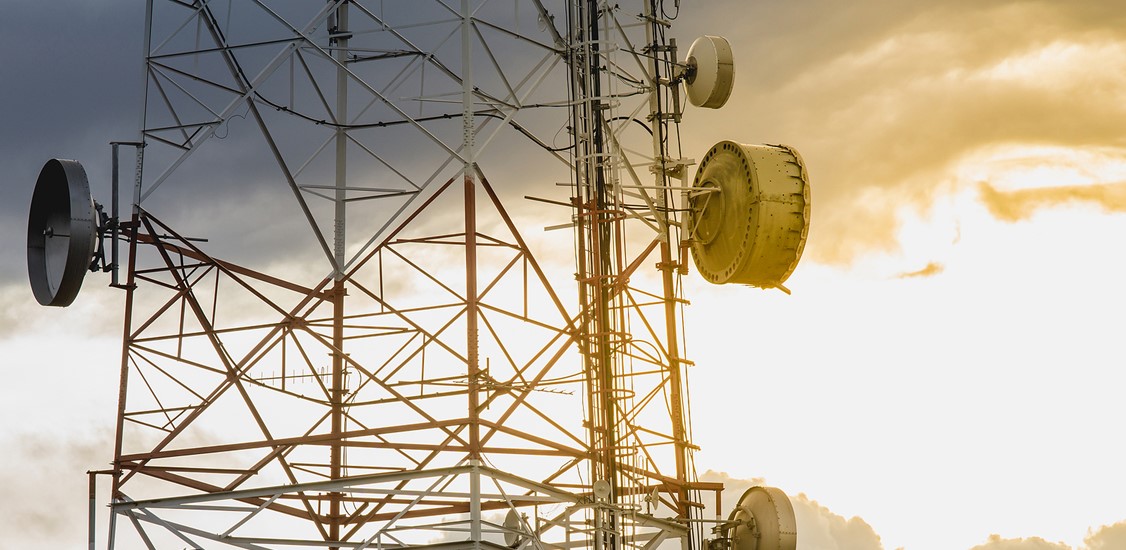It’s no secret where the power goes in a 5G network – it’s the RAN. According to data from the GSMA (Fig. 1), the RAN consumes 73% of all energy used in a network. Open RAN brings some inherent and well known sustainability benefits for 5G networks. But there are other emerging power management best practices that mobile network operators (MNOs) should be aware of.
Reducing RU power consumption
 Figure 1. Mobile network energy consumption breakdown (Source: GSMA 2021).
Figure 1. Mobile network energy consumption breakdown (Source: GSMA 2021).
Given that majority of the power consumed in a RAN is by RF equipment, predominantly the RU, the O-RAN ALLIANCE has specified some well-known RU power optimizations that better match the power consumed to the traffic load. These include:
- Fronthaul control and user plane data blanking, by which the RU can stop transmission for short idle durations and save power.
- OAM-triggered cell admin state lock/unlock. This enables the RU to activate or deactivate a carrier based on load.
- Changing gain of a transmission array carrier to reduce radiated power.
- Creation of an “energy-saving-enabled” mode that transitions the RU into a deeper sleep power saving state during periods after all carriers are inactivated.
The O-RAN ALLIANCE is now further defining a comprehensive framework for RU fronthaul energy saving standards over control and management planes (C-Plane/M-Plane) with more details expected in 2024.
O-RAN server energy management
Beyond Open RAN RU energy management standards, there are a number of novel technologies that help to reduce power consumption in the network.
O-RAN servers use commercial off-the-shelf (COTS) servers from Intel and other CPU manufacturers. Both DU and CU servers benefit from the expanded power management states (C-states) on the CPU. These C-states can reduce the voltage common carrier (VCC) levels of the CPU, and they can empty the L1/L2 cache and L3 cache to reduce their energy draw. One challenge has been the time needed to “wake up” the CPU when data levels pick up. Intel is working on ways to reduce exit latency allowing for a faster wake up from deep sleep to better meet the needs of RAN workloads.
Better data equals better energy management
Using telemetry to collect power, energy, and environment (PEE) data is an emerging trend that provides the data needed to know how much and where power is being saved. Telemetry provides access to data node-level power, energy, and environment (PEE) parameters on the RU and on the CU and DU servers. By collecting this data from all of the RAN network functions, energy management software can report the total energy consumed by each gNodeB.
Changes made to network functions (NFs) to optimize power can be tracked individually or network wide by using telemetry. A secondary goal of telemetry data is to calculate an energy efficiency KPI (for example, data volume transferred divided by energy consumption) per NF or for the entire gNodeB base station. Energy efficiency KPIs that are trended over longer durations help MNOs to understand energy consumption and savings relative to useful work output performed over time.
A further use of the data collected is for advanced AI/ML analysis and control by an energy management platform. O-RAN ALLIANCE is currently in the process of further defining energy consumption and energy efficiency related standards for the Open RAN Cloud resources and this will help advance the energy telemetry solutions.
RIC manages RAN software energy
The RAN Intelligent Controller (RIC) can have many functions, including providing a platform for flexible energy management intelligence and automated response.
There are two types of RIC: Non-real time RIC (non-RT RIC) platform is part of the service management and orchestration (SMO) platform. The apps used with the non-RT RIC are known as rApps. The near real time RIC (near-RT RIC) platform is hosted in an edge server or telco cloud and is used for network optimization actions taking place in near real time. The near-RT RIC functionality can be expanded with xApps.
xApps and rApps can be deployed on the RIC to guide energy management across the RU, cloud, DU and CU network functions. O-RAN ALLIANCE has published a Network Energy Saving Use Cases Technical Report (O-RAN.WG1.NESUC-R003-v01.00.03) detailing a number of such use cases including carrier and cell switch off/on, RF channel switch off/on, advanced sleep mode, and cloud resource energy saving mode.
The RIC consumes energy metrics and KPIs on the hardware and software used for the RU or the Open RAN cloud infrastructure. RIC-deployed energy savings schemes can either be policy-based or employ AI/ML techniques depending on the app used in the RIC. The AI/ML assisted functionality may include prediction of future traffic, user mobility, resource usage and network performance for different ES optimization states.
Real world power saving estimates
Just how much power can be saved in a network by active power management? We have some estimates from the O-RAN ALLIANCE Technical Report (O-RAN.WG1.NESUC-R003-v01.00.03), and they depend on a number of factors, including:
- Power profile and design of O-RU hardware and software.
- Network deployment details like antenna type, cell configuration, coverage requirements, etc.
- Network traffic/operating load, and durations and frequency of low load
One O-RAN power management technique we discussed in this article is the carrier and cell switch off during low load connections. The O-RAN ALLIANCE has studied this O-RU optimization scenario and estimated power savings that amount to roughly 25-30%, and further developed the following network-wide power saving estimates.
Assuming that a 4T4R O-RU is used in the network, then Table 1 shows the following power savings:

Looking at the same analysis for a 64T64R O-RU (Table 2) shows that the power savings can be much higher:

These estimates, and others included in the O-RAN ALLIANCE paper, can be used as a baseline to provide a high-level network wide savings estimate for typical large-scale mobile networks.
A growing priority for more MNOs
Energy management is a growing priority for MNOs that have an emerging set of tools with which to track and reduce energy at various levels throughout the network. The deployment of telemetry to collect and analyze data for energy efficiency KPIs can provide a much better understanding of network energy patterns paving the way for implementation and deployment of RIC-guided energy saving solutions.
But energy management must be done in a way that consumes minimal server resources and doesn’t have an impact on service quality as measured by key performance indicators (KPIs) and, ultimately, user satisfaction. Networks are complex, which means it’s important to automate the deployment and rollback of these features in the event there are any conflicts, and to combine automation with telemetry to ensure a fast response to any negative changes to KPIs.
The move to Open RAN opens up exciting new ways for MNOs to make their networks more energy efficient and to do their part to contribute to sustainability.




















